Antiquities: Audio tapes that we have not lost
 In five years, another vigorous startup will offer a breakthrough technology. Sly machine learning algorithms take the music and modify it a bit, at the limit of hearing. There is more bass, less high frequencies, or vice versa. It is argued that such modifications are unique to each user, and are based on his psychological profile. It is reported that small changes (the musicians protest: they spoil the sound!) Completely change the attitude to the songs, make you feel a special affection, make an individual experience out of just music.
In five years, another vigorous startup will offer a breakthrough technology. Sly machine learning algorithms take the music and modify it a bit, at the limit of hearing. There is more bass, less high frequencies, or vice versa. It is argued that such modifications are unique to each user, and are based on his psychological profile. It is reported that small changes (the musicians protest: they spoil the sound!) Completely change the attitude to the songs, make you feel a special affection, make an individual experience out of just music.Oh yeah, in the process of listening, the music continues to change so that after hearing the option adapted for another person, the user vaguely feels that something is missing. Cool, yeah? If you see this news, be sure to go to the comments and say that the startup has reinvented the audio cassette.
My tape era fell on childhood and adolescence, and ended not long ago - in 2003. Or still long enough to forget almost all the details of this particular social and technical experience, except, perhaps, the fact that the tapes sounded bad. This is not quite so, rather, we listened to them poorly. But I realized this only in 2018, rediscovering this format for the precomputer era, which, however, also played a part in the history of personal computers. Today I report on what it is like to use the technology that was the most popular in the world, then died, and now it is rising from the dead.
Last cassette

')
I want to start this story from the end. Do you remember when this moment happened? You just listened to your favorite album, but press the stop, put the cassette player aside and never turn it on again. Already from 2000, my musical infrastructure began to acquire strange forms. I mean, I was still listening to the cassette player, but compilations were made by my friends, collecting “two times in 45 minutes” a playlist of MP3 files extracted from Napster on a computer in WinAMP. Or again: in the early network "Masyana" he overheard the song Muse, and the album Showbiz bought it on tape - in a folk way it was put up for sale in a night stand next to beer and sneakers.

In short, in 2003, I jumped right onto a CD-MP3 player, and three years later I bought my first iPod. Cassettes in our country generally lived much longer than in the west, where the most successful cassette years were used 1987-1989 . In a sense, we were lucky. Nevertheless, the transition to any form of digital sound was fast and rapid - too obvious advantages were provided, if of course you could afford them.
Almost a time machine
 I wanted to restore the cassette farm for the last four years - in order to listen to old collections and to record new ones. But he kept: it was strange somehow. First, I collect computer vintage, and here everything is analog. Secondly, there is a general consensus on the disgusting sound of audio cassettes - and what’s the point? Vinyl is cool, but tapes are not. Thirdly, it is not very clear how to recover. On the one hand, the infrastructure for all these years has not disappeared anywhere; here it is, next to you, only reach out. On the other hand, the gentle mechanics of cheap devices have long made them half-workers.
I wanted to restore the cassette farm for the last four years - in order to listen to old collections and to record new ones. But he kept: it was strange somehow. First, I collect computer vintage, and here everything is analog. Secondly, there is a general consensus on the disgusting sound of audio cassettes - and what’s the point? Vinyl is cool, but tapes are not. Thirdly, it is not very clear how to recover. On the one hand, the infrastructure for all these years has not disappeared anywhere; here it is, next to you, only reach out. On the other hand, the gentle mechanics of cheap devices have long made them half-workers.But still I decided. Well! Let be! And okay! In part, my decision was influenced by the timid renaissance of the cassette theme as a whole: Bandcamp increasingly began to come across new music releases available on cassettes. Fashionable techno-intakes started to test old and new tape recorders. Even the mainstream responded - the soundtracks for the TV series Stranger Things and the film Guardians of the Galaxy, and not only.
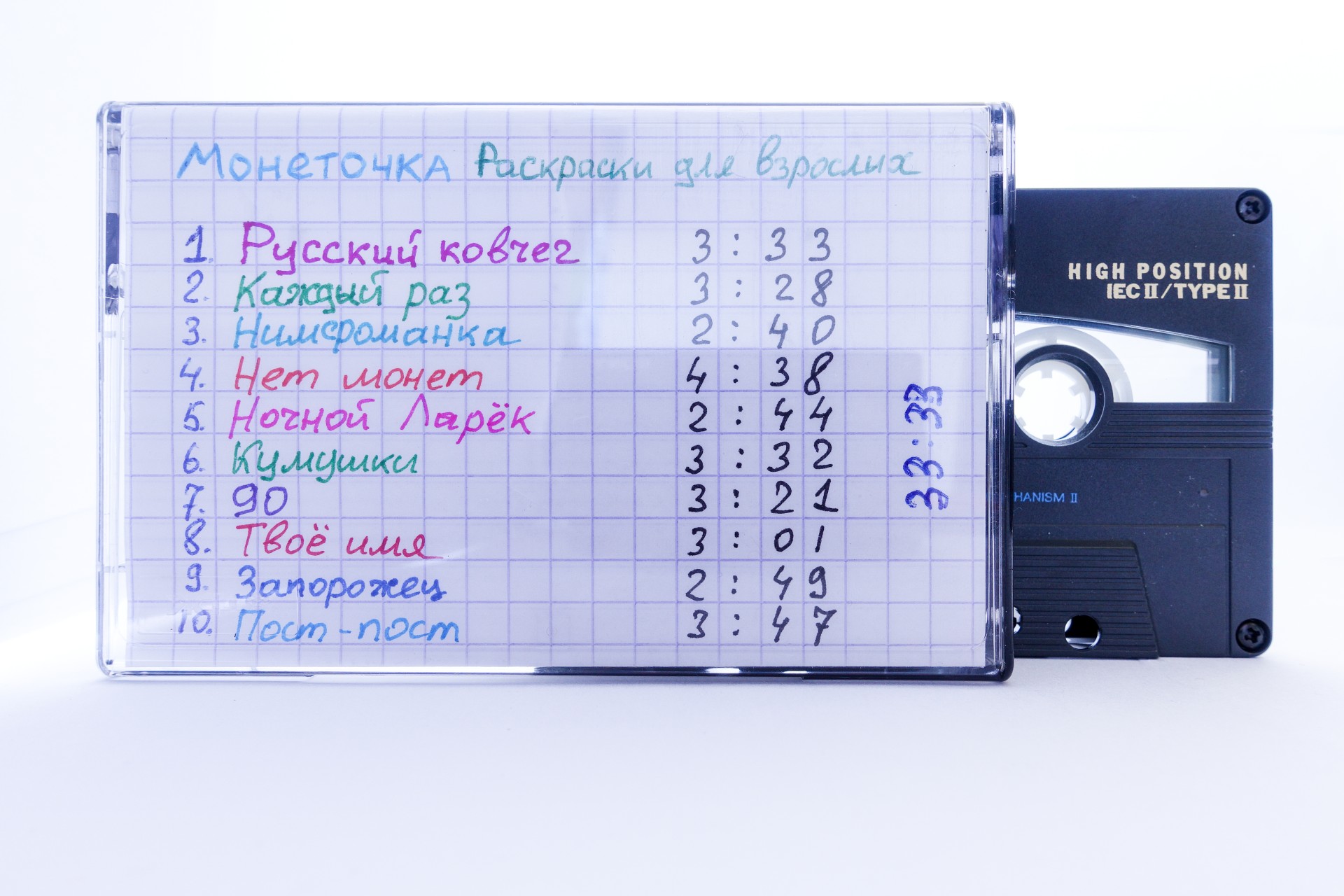
Well, the prices for beu on the HYIP wave have crept upwards, partly also because decent equipment has not been produced for a very long time. Re-acquaintance with cassettes in 2018 gave me an incredible feeling when everything seems to be working, but slightly unreliable. This is a huge difference compared to how we interact with any digital device. It was precisely because of this precariousness that we had jumped to a figure in the form of a CD, MP3, and Apple Music for quite some time, without regret having loaded one or two decades of film music fans into the closet. Should I get the stored back?
Vintage suffering
Yes, of course not worth it, it is not in vain there turned out. Unless you want to diversify your music life with a huge number of crutches and slingshots that accompanied our cassette life in the 90s. Munching tape, cleaning the heads and rollers with alcohol or cologne, howling a portable player while walking, ineradicable noise. This is clearly not what I wanted to “restore”, although I mentally prepared for such an outcome. Rather, I wondered how tapes might sound in conditions close to perfect. Where does this era have a golden age? And how is it characterized, what are the requirements?
I asked these questions when in the middle of summer I decided to buy something like that. On the one hand, the choice is huge: it is cheap and expensive, and even free. And with autoreverse, and without. Portable, stationary, whatever you want. But performance does not depend on the price: those who give a guarantee of performance at least a year, sell thirty-year devices more expensive than they were new cost. Everything cheap is likely to work purely nominally, it is impossible to listen.
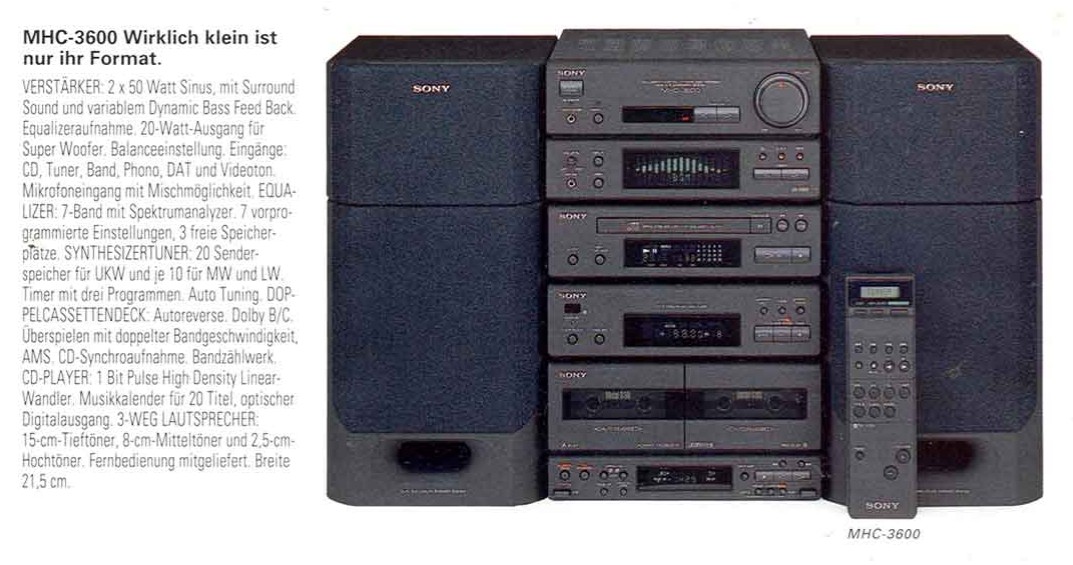
And what is the right thing to do if you decide to re-run on the cassettes? In the nineties, my never-fulfilled dream was a music center, so that both CD and two-cassette player, and speakers so that more. Alas, the whole cassette era, I managed a very mediocre portable dvuhkassetnikom Sony, and music centers on the quality of the cassette part not far from boomboxes. Portable players as a reference nostalgic device do not fit: they are more expensive, and by the sound they very rarely approached stationary devices.
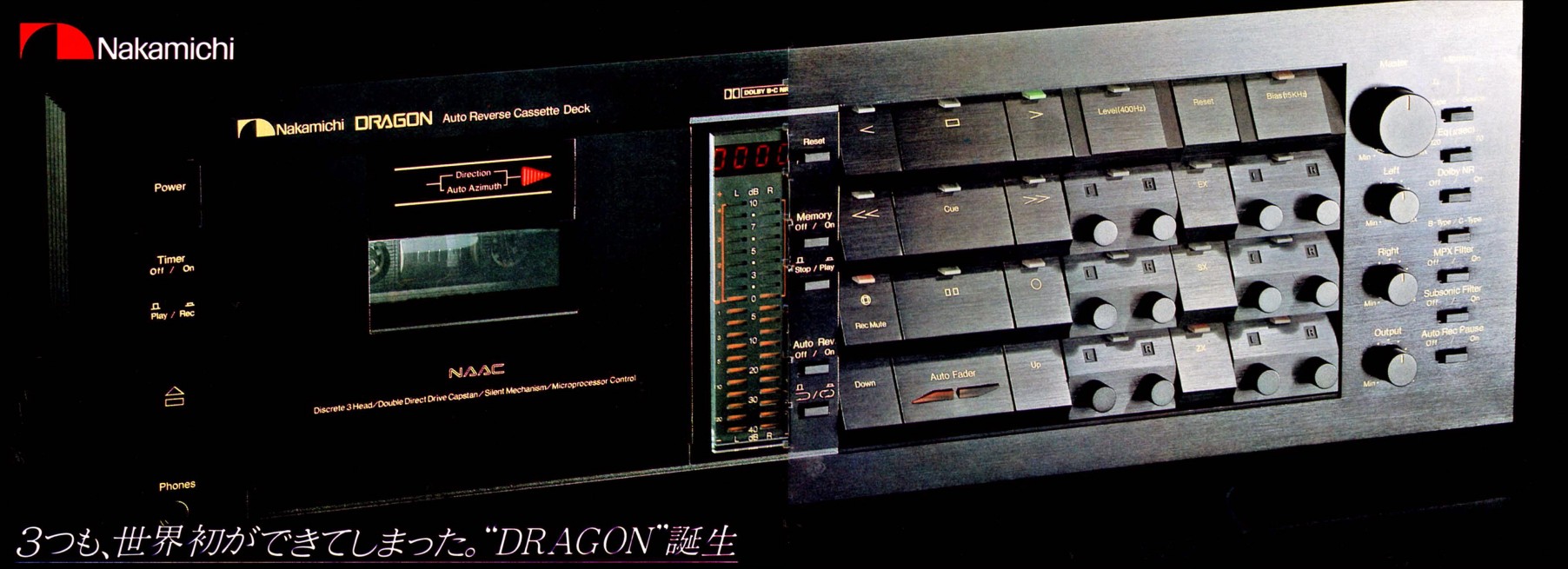
In short, you need to take the topman , but the coolest, legendary samples of the tape recorder now cost absolutely incredible money. The gorgeous Nakamichi Dragon cassette deck combines high sound quality with convenience - there is even an auto reverse. But it is worth it, depending on how lucky you are, from two to three thousand dollars. This roughly corresponds to the price of a new device, and with inflation in view, there is even a 50% discount. But, sorry, this is too expensive. On the other hand, the list of technologies that determine the steepness of a cassette recorder is well known, and almost all of these technologies can be found in cheaper devices.
Still need to decide on the era. The older the device, the greater the chance that it will turn into a pumpkin. It’s also not worth taking a technique released in the twilight of the industry, in an era of total savings. There are different opinions, but I concluded for myself that the golden age of tape recorders fell at the end of the 80s - then the most technically advanced devices were released. But at the very beginning of the nineties there were still models for which it is not a shame. Studying technologies, I became acquainted with such concepts as “closed path”, “double tonal”, “automatic adjustment of bias current”, “Dolby bi, si and es”, and also imbued with the need to count magnetic heads and motors. In the correct device, both must have at least three. As a result, the Kenwood KX-7030 cassette deck was purchased - made in Japan, the second oldest in the model range of the 1991-1992 season.

The owner claimed that he changed the drive belt before the sale, and the tape recorder works just fine. He lied. More precisely, he did not speak the whole truth or was sincerely mistaken. I turned on the tape recorder, conjured up with wires, put in a cassette, and it began to play - it seems to be quite good. Then he tried to record - and it was surprisingly good! I had no idea how good the cassette tapes might sound like! And then the tape recorder chewed the tape.
After reading the service manual, I found that the previous owner changed one belt and forgot to change the second one. Order, delivery, installation, and it all worked. Although I still have the feeling that this device is not functioning, but is slowly being sent to another world. I even made sure that the parameters of the tape recorder more or less meet the specifications, crooked, but still measuring them with the help of a computer and a sound card. About this in detail and with graphs written in my telegram . Having produced a couple of high-quality audio cassettes of the second and fourth type, I finally realized that the magnetic tape might sound very good. It will never sound as good as a number. Here the whole community of fans of purely analog sound does not agree with me, but it seems to me that the soulfulness that this community finds in music without numbers is just a distortion, not a signal.
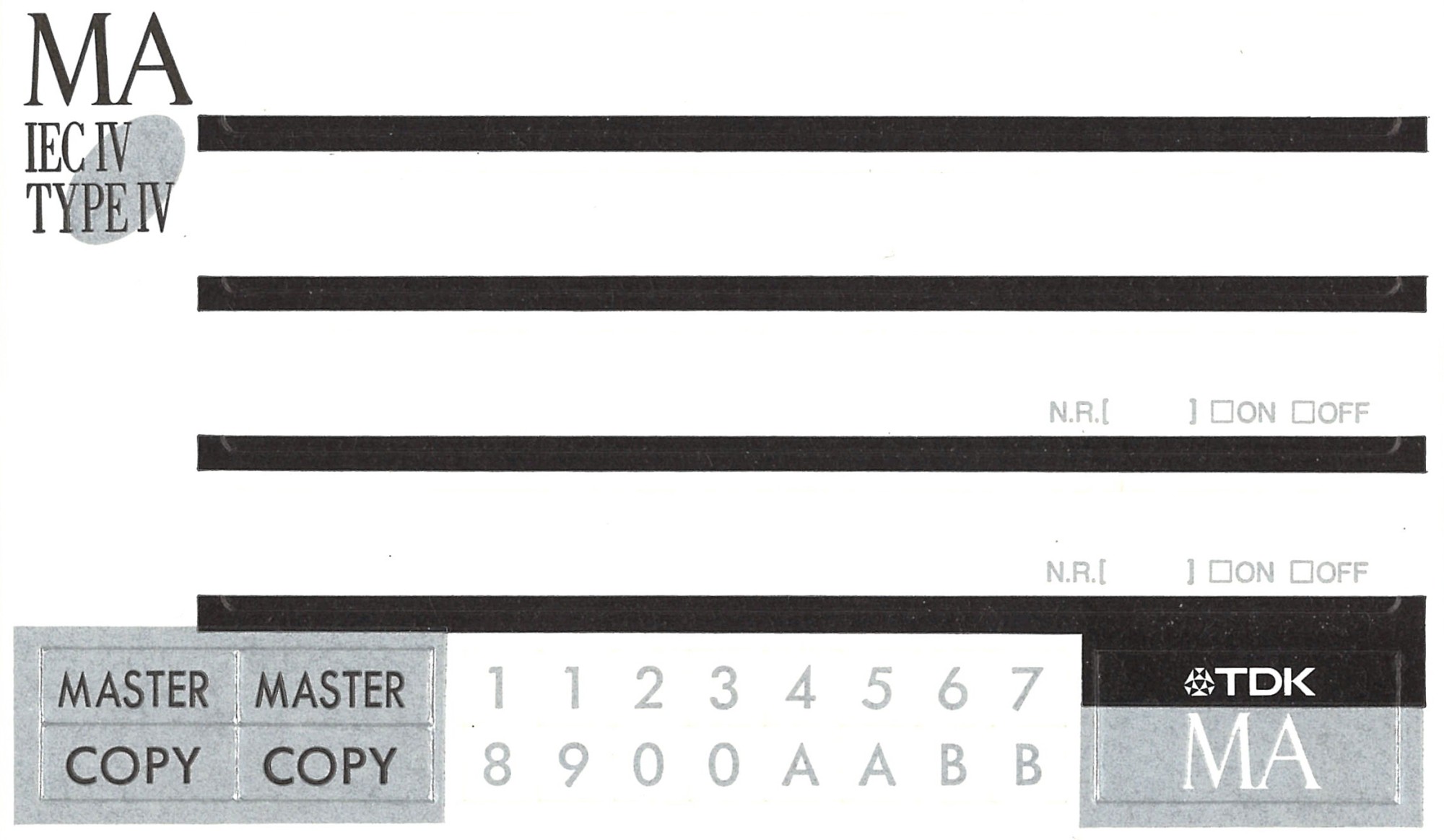
The sound, or just the experience of interaction with a magnetic tape, is preferred because it is not perfect. For the same reason, it is now fashionable to film or add a retro bow to a digital photo. For the same reason, almost all record stores now sell vinyl. When we switched from CDs and MP3s to CDs and MP3s, we chose convenience and lack of interference, quality, reliability, compactness, and access to music in previously unattainable volumes. For 36 years of the existence of a CD and twenty years of the existence of an MP3, seventeen years after the release of the first Apple iPod, this is not something to be pallid, we simply take all these achievements for granted. And you want something like that. The creators of digital products and services should pay attention to this: accuracy and quality can now seem something obvious and boring, and the consumer is in search of abstract “sincerity”.
And now, please, in 2018, I sit in my office, compose playlists from digital music, record them on magnetic tape. I cut out a piece of paper, write on it the pen with the names of the songs and the name of the collection, and I am happy as an elephant. Over the past years, it is not that the debate for and against different carriers of music has become irrelevant. The very idea that a music album must have a physical embodiment almost disappeared. Yes, and by the “album” modern performers now understand rather: “I gathered myself together, locked myself in the studio and brought everything I wanted to mind,” and not the release of a “record”. You can earn now by laying out individual tracks on YouTube. Is the music industry free from the dictates of the media?

Well, so be it, but I am a representative of the old generation, it is important for me that there is something to hold on to . Cassettes, in addition to delivering music to my ears, provided a complete visual-kinesthetic experience. Color and fonts on the cover, crack on the case, the color of the tape itself. A hole in the second track on the first side, where you accidentally hit the "record" button on the tape recorder. It was chewed here five years ago, and is still audible. You know these moments, they are also part of your life. In the fully digital music world, when I exchange money for megabytes, this is a bit lacking.
The re-opening of the tapes showed how badly (forcedly) I listened to them in the 90s, although it didn’t seem so to me then. My music was either rewritten from someone else's cassettes with imminent loss of quality, or recorded from a radio, that is, by definition, it sounds so-so. Rare albums were recorded from a CD, and I also made a custom-made discography by Deep Purple, which I had all recorded from the company vinyl. Given that I rarely could afford the new empty cassettes, even these best samples sounded sad. The benchmark was purchased in the market stall cassette printing. No, not branded, such if in Russia there were 90s, it is clearly not in my province. Basically, I still have pirated releases from Poland, some like this one .

I was surprised to find that in 2018 you can cheaply buy sealed branded cassettes with music - released back in those years. So I bought, put, turned on and ... It was terrible. It is clear that most of the cassettes with music were produced with a cheap tape of the first type. But they were also replicated on special machines that recorded sound on a tape at a speed of tens and hundreds of times faster than the nominal. The quality is not affected very well, and at best, these tapes sound satisfactory .

In my collection there are only a couple of random exceptions - these are cassettes with the recording of classical music from Europe. There and the tape - chrome, and the approach to the record apparently was more accurate. Despite their age (they seem to be generally from the 70s), they sound great. And so, if you want to record a well-sounding tape, write it down yourself!
To share the experience, I recorded the same song four times, on a tape of two different types, with and without noise reduction, and digitized all the recordings. I chose a song that was loud and rock-tuned, and this is not entirely fair: on a quiet recording, the noise of the tape is more noticeable, and on a classic or jazz tape distortion is easier to recognize. In such a hothouse environment, my conclusion is: there is no huge difference what you expect between a digital original and an analog recording. But check for yourself.
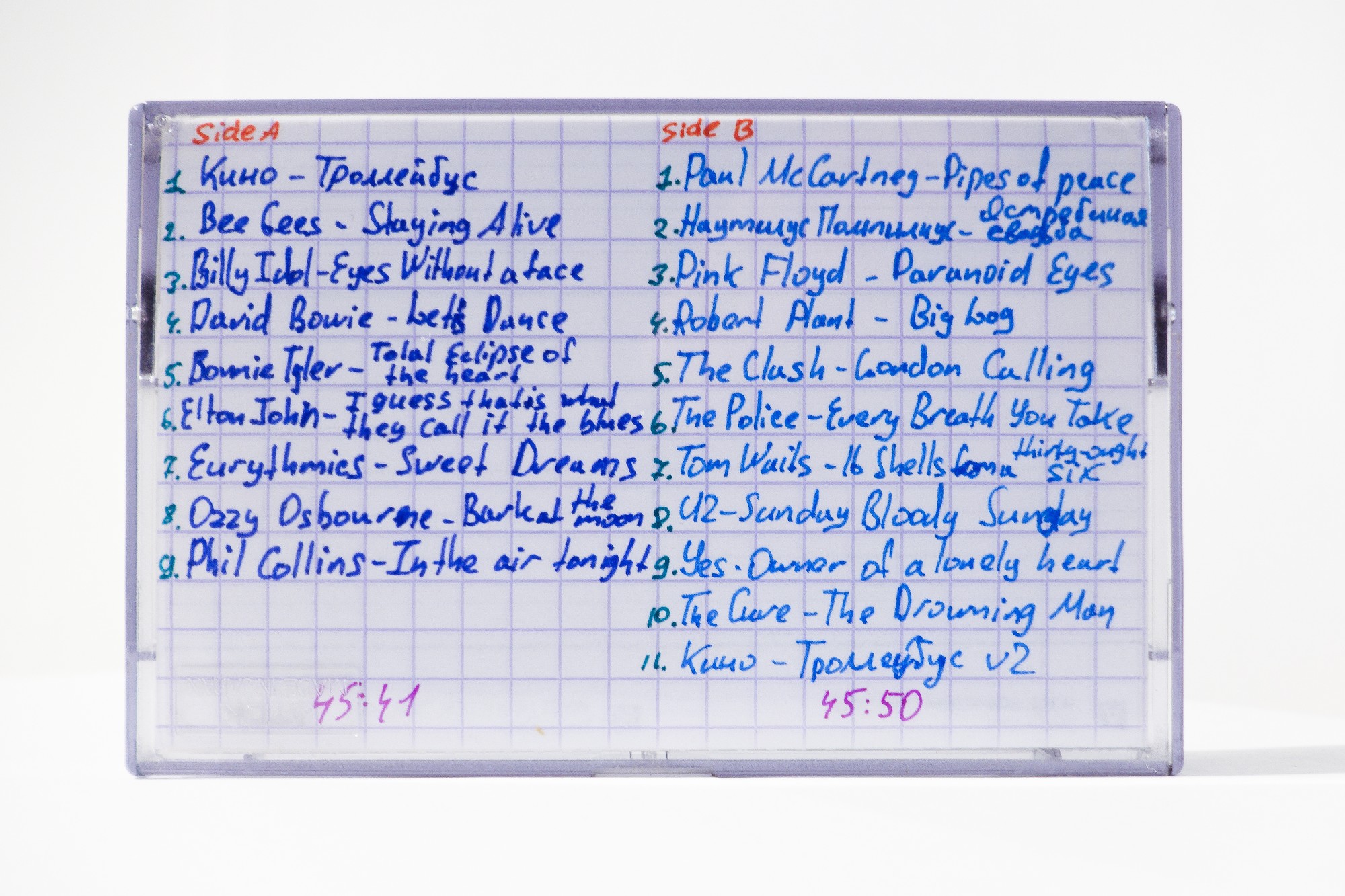
I realized that in the 90s I did not play enough with cassettes. When I only had a tape recorder and a pair of cassettes, I could still play back. But then the party came to me incredibly, criminally cheap chrome ribbons, and then I realized that everything is more serious than it seems. Therefore, I wrote down the art project in half, half the justification for the rotation of the rollers and the twisting of the belt in 2018. For each year of my life I collect a collection of suitable songs - which I remember, or just important, within the limits of one ninety minute cassette. The cassette in this case performs, like a bias current , the function of bringing my memories in order. Regarding the recording process, and about the music, and about myself, here, in a separate telegram channel , I tell a variety of stories. There will be no technology at all, but now there will be fewer tapes in the main channel . If interested, add.
Tape recorder
In the 90s, I generally did not care what kind of tape recorder was in my house. The main thing is that I have the opportunity to listen to music anywhere, using a portable player. That was really insanity. The first player was presented to me at the age of eight, and then it was still possible to get only Soviet salt batteries. From them, the player worked for about four minutes, then another ten minutes twisted the tape at half speed, which is why the singing of Viktor Tsoi in some places acquired the character of Louis Armstrong. In 1993, I had a Sony player, with autoreverse and, more importantly, batteries and charging for them. Over the next five years, I stoch it to the base of daily, almost around the clock operation. One day it seems to break everything at once.
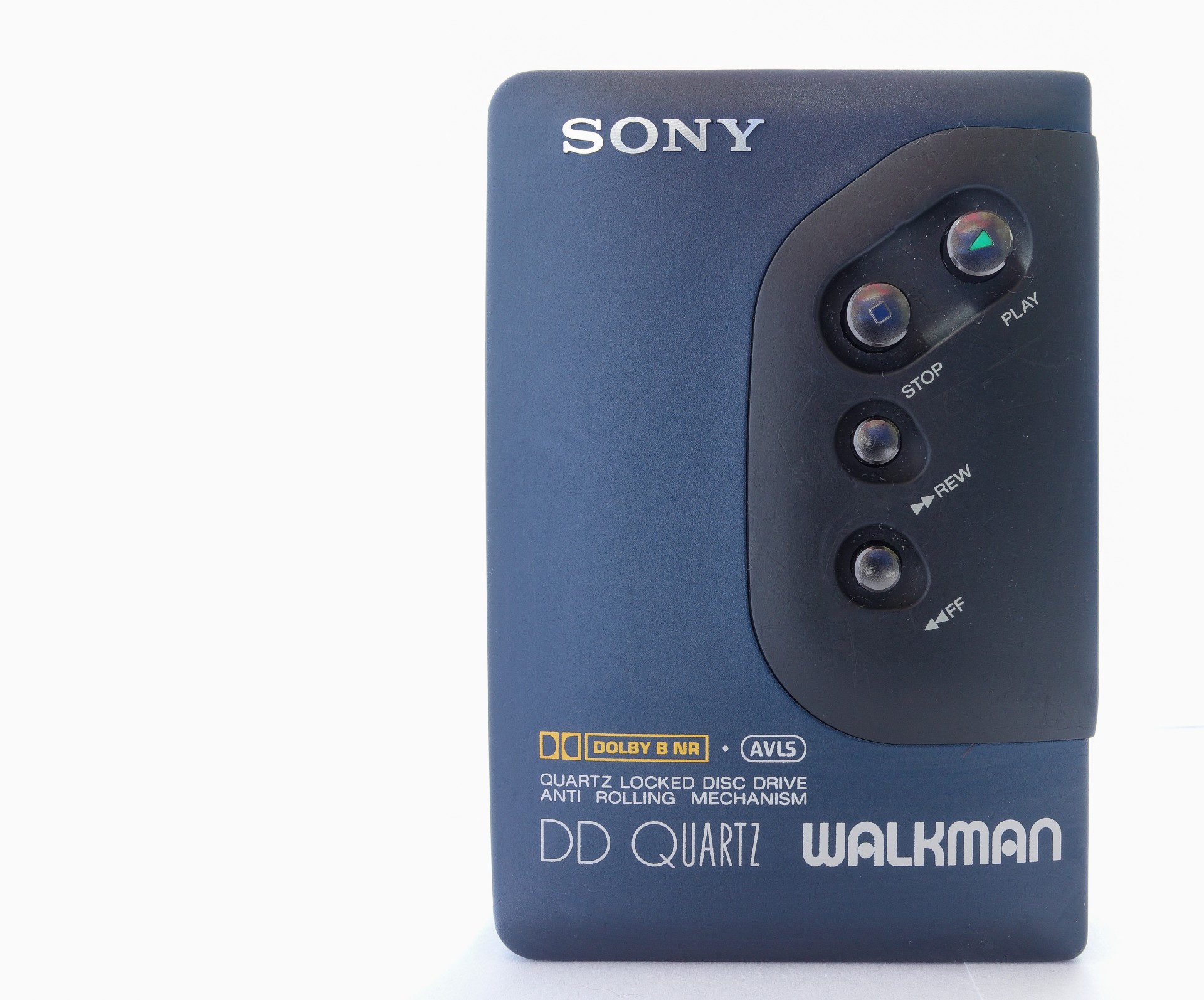
Cassette players do not differ in sound quality. Really worthy copies collected with minimal care about the user is not so much. Preserved them in a living state even less: you are more likely to find on sale a mediocre model of the beginning of the two thousandth. It’s time to think about just a reliable portable player, and such, for example, did Sony in the WM-DD series, where instead of rubber drives a direct drive to the capstan. Alas, almost all models of this series used a plastic gear with an iron central part. Over the years, the plastic is compressed, and since an iron disk appears in its path, sooner or later it will burst. There are two exceptions. The latest player in the series, WM-DD9, is the only one equipped with an automatic reverser, and on eBay it easily goes away for a thousand euros or more, if in good condition. And simple WM-DD22. That's what I bought.
It is more likely to break something else, but for now it works. It makes a lot of noise by itself, although it sounds head and shoulders above quite inexpensive models. In modern conditions, I don’t really need it, but if we are already engaged in the restoration of vintage infrastructure, then we must go to the end. I will go home, take it with you. All my collections of school and a few student years have survived (in the closet) - I can even continue to listen to them from the place where I stopped fifteen years ago. And then it will be exactly as in the eighth grade: I will press the button, with a noticeable click, the mechanism will turn on, the motor will sound, giving sound through the wires directly to the headphones, the tape will spike. And then there will still be music.
Source: https://habr.com/ru/post/422737/
All Articles